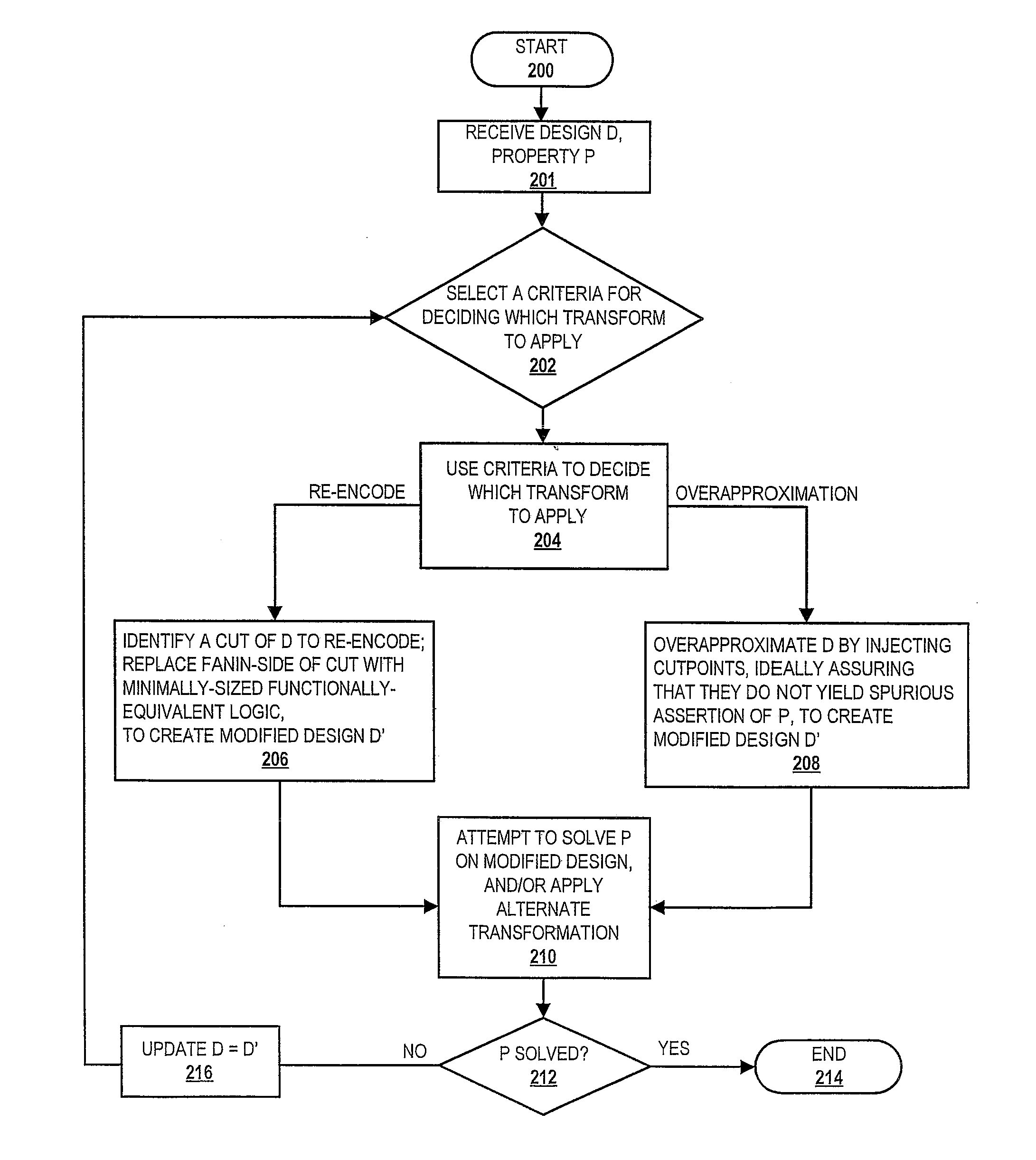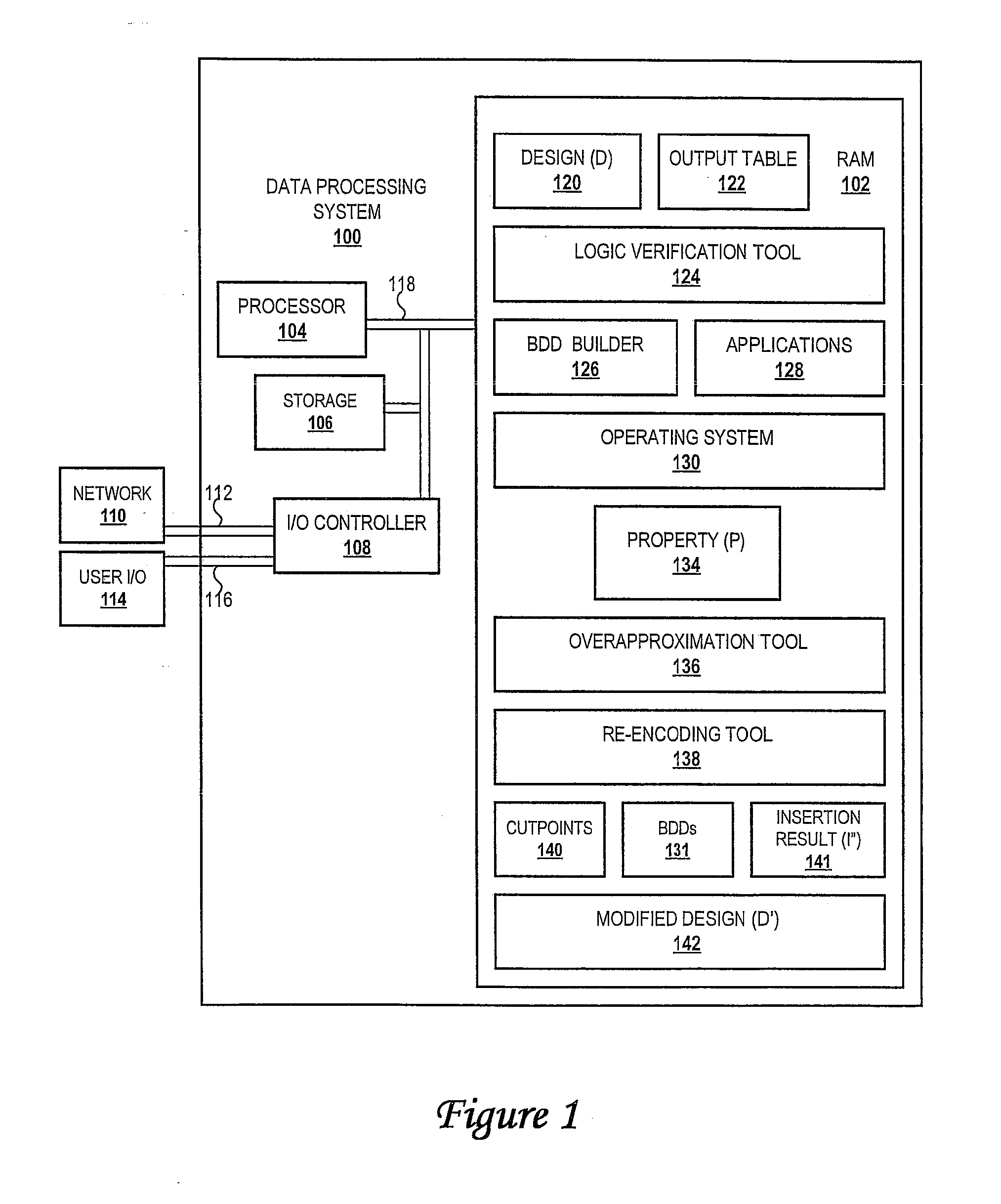System and Program Product for Incremental Design Reduction via Iterative Overapproximation and Re-Encoding Strategies
a technology of incremental reduction and computer program product, applied in the field of testing and verification, can solve the problems of inability to tolerate, the result polluted by design errors, and the inability of consumers to accept, so as to reduce logic
- Summary
- Abstract
- Description
- Claims
- Application Information
AI Technical Summary
Benefits of technology
Problems solved by technology
Method used
Image
Examples
Embodiment Construction
[0019]The present invention provides a novel synergistic transformation technique for reducing verification complexity. In particular, the present invention facilitates the synergistic use of a structural overapproximation technique for reducing the size of a sequential design, coupled with the use of a re-encoding technique to render additional property-preserving reductions. The benefit of this synergistic approach is that it enables design reductions far exceeding those possible in the prior art. The result of the present invention is drastic savings in computational resources for the verification process, enabling design flaws to be exposed and proofs to be completed that otherwise would be unfeasible.
[0020]The present invention relies upon the synergistic application of two techniques to yield increasing reductions of the design under test. First, a logic re-encoding technique simplifies the design under test while preserving its behavior. This re-encoding technique computes th...
PUM
 Login to View More
Login to View More Abstract
Description
Claims
Application Information
 Login to View More
Login to View More - R&D
- Intellectual Property
- Life Sciences
- Materials
- Tech Scout
- Unparalleled Data Quality
- Higher Quality Content
- 60% Fewer Hallucinations
Browse by: Latest US Patents, China's latest patents, Technical Efficacy Thesaurus, Application Domain, Technology Topic, Popular Technical Reports.
© 2025 PatSnap. All rights reserved.Legal|Privacy policy|Modern Slavery Act Transparency Statement|Sitemap|About US| Contact US: help@patsnap.com



